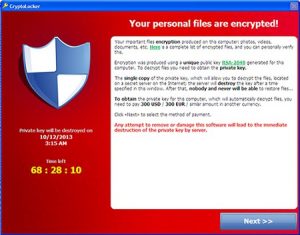In today’s hyperconnected world, data is one of the most valuable assets you own. It fuels your personal interactions, powers your business operations, and shapes your digital identity. However, this same data is a prime target for cybercriminals. Whether it’s personal details like social security numbers or business-critical information like trade secrets, the consequences of a data breach can be catastrophic. Protecting your data is not just a precaution—it’s a necessity.
Understanding the Types of Data at Risk
To safeguard your data effectively, it’s crucial to understand what’s at stake.
Personal Data: This includes information like your name, address, credit card details, and even browsing habits. Cybercriminals seek this data to commit identity theft or financial fraud. Your online presence, from social media profiles to e-commerce accounts, is a treasure trove of exploitable information.
Business Data: For companies, the stakes are even higher. Confidential customer records, financial statements, intellectual property, and operational strategies are all vulnerable. A breach can result in lost revenue, reputational damage, and legal repercussions.
Strengthening Your Digital Fortress
A strong defense is your best offense when it comes to data security.
Start with robust passwords. Use unique combinations of letters, numbers, and symbols, and avoid reusing passwords across accounts. Implement multi-factor authentication (MFA) for an added layer of security, ensuring that even if a password is compromised, access isn’t granted without verification.
Keep all software and systems up-to-date. Cybercriminals exploit outdated software with known vulnerabilities, so regular updates and patches are essential.
Your Wi-Fi network can also be a weak point. Change default router settings, use strong encryption protocols, and never leave your network open to public access. A secure network is a foundational step in protecting your digital assets.
Best Practices for Safe Online Behavior
Even with technical safeguards, human behavior plays a critical role in data security.
Be vigilant for phishing attempts. These often come as convincing emails or messages designed to trick you into revealing sensitive information. Look for red flags like misspellings, generic greetings, or urgent requests.
Avoid oversharing on social media platforms. While it’s tempting to post about your life or business activities, oversharing can provide cybercriminals with details to craft targeted attacks.
Public Wi-Fi is a convenience but also a risk. When using it, avoid accessing sensitive accounts or conducting financial transactions. If necessary, use a virtual private network (VPN) to encrypt your connection and shield your data.
Implementing Data Backup and Recovery Strategies
Even with strong security measures, no system is completely immune to threats. This is why data backups are non-negotiable.
Regularly back up personal and business data to ensure you can recover quickly from an attack or hardware failure. Cloud storage offers accessibility and redundancy, while physical drives provide an offline alternative.
Test your recovery plans periodically. Knowing that your backup works—and can be restored in a timely manner—provides peace of mind during a crisis.
Leveraging Advanced Security Tools and Services
Advanced tools can give you an edge in protecting your data.
Encryption is a powerful way to keep sensitive information secure, ensuring that even if data is intercepted, it cannot be read without the proper decryption key.
Monitoring tools can help detect suspicious activity early, such as unauthorized access attempts or unusual data transfers. For businesses, professional IT security services can provide tailored solutions and expertise to address specific vulnerabilities.
Building a Culture of Security Awareness
Data security isn’t just about technology—it’s about people.
Educate employees and family members about common cyber risks. Offer training sessions on recognizing scams, creating strong passwords, and following best practices. Encourage everyone to report suspicious activities immediately, creating an environment where vigilance is rewarded.
Security should become a daily habit, not a one-time action. Simple practices like locking devices, using secure passwords, and staying informed about emerging threats can make a significant difference.
Conclusion
Protecting personal and business data requires a proactive, layered approach. From strengthening technical defenses to fostering a culture of security awareness, every step you take reduces your risk. By staying vigilant and embracing best practices, you can outpace evolving cyber threats and safeguard what matters most. In the ever-changing digital landscape, preparation is the key to peace of mind.


 The 2018 update of the Oxford English Dictionary will include ransomware as a new entry, and this announcement just happens to coincide with a new zero-day exploit that bypasses security measures of popular cloud computing services such as Office 365 and Google Drive.
The 2018 update of the Oxford English Dictionary will include ransomware as a new entry, and this announcement just happens to coincide with a new zero-day exploit that bypasses security measures of popular cloud computing services such as Office 365 and Google Drive.